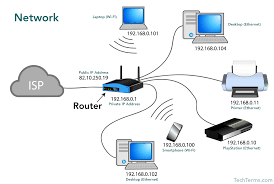The Persistent Issue of Gender Inequality at Work
Gender inequality in the workplace remains a significant challenge that affects individuals and societies worldwide. Despite progress in promoting gender equality, disparities persist in various aspects of work environments, including pay, representation in leadership positions, and opportunities for career advancement.
Gender Pay Gap
One of the most glaring manifestations of gender inequality at work is the gender pay gap. Women, on average, earn less than men for performing the same or similar roles. This wage disparity not only reflects an injustice but also contributes to financial insecurity and limits economic independence for women.
Underrepresentation in Leadership
Women continue to be underrepresented in leadership positions across industries. The lack of female representation in top executive roles and boardrooms hinders diversity of thought and decision-making processes within organizations. Breaking through the glass ceiling remains a formidable challenge for many women striving to advance their careers.
Career Advancement Opportunities
Gender biases and stereotypes often influence decisions related to promotions, assignments, and opportunities for skill development. Women may encounter barriers to accessing career advancement opportunities due to systemic discrimination or implicit biases that favor male employees. This disparity not only affects individual career trajectories but also perpetuates a cycle of inequality within workplaces.
Addressing Gender Inequality
Efforts to combat gender inequality at work require a multi-faceted approach involving policy changes, cultural shifts, and individual advocacy. Organizations can implement strategies such as pay equity audits, mentorship programs for women, diversity training initiatives, and flexible work arrangements to promote a more inclusive and equitable workplace environment.
Additionally, raising awareness about the impacts of gender inequality and fostering allyship among colleagues can help create a supportive atmosphere where all employees—regardless of gender—can thrive professionally.
Conclusion
Gender inequality at work represents a persistent obstacle to achieving true workplace equity and inclusivity. By acknowledging existing disparities, advocating for change, and championing diversity efforts, we can move closer toward building environments where individuals are judged based on their skills, talents, and contributions rather than their gender.
9 Benefits of Addressing Gender Inequality in the Workplace
- 1. Raises awareness about systemic biases that impact career opportunities
- 2. Sparks conversations on diversity and inclusion in the workplace
- 3. Promotes the need for fair compensation regardless of gender
- 4. Encourages organizations to implement gender equality policies
- 5. Highlights the importance of mentorship and support for women in leadership roles
- 6. Drives efforts to create a more balanced representation in decision-making positions
- 7. Inspires individuals to advocate for their rights and challenge discriminatory practices
- 8. Fosters solidarity among employees striving for gender equality at work
- 9. Leads to positive changes that benefit not only women but also the overall work environment
Addressing Gender Inequality at Work: Overcoming Pay Gaps, Leadership Imbalances, and Systemic Barriers
- Gender pay gap leads to financial insecurity and unequal compensation for equal work.
- Underrepresentation of women in leadership roles limits diversity of perspectives and decision-making.
- Biases and stereotypes hinder women’s access to career advancement opportunities.
- Gender inequality perpetuates a cycle of discrimination and reinforces systemic barriers in the workplace.
1. Raises awareness about systemic biases that impact career opportunities
Gender inequality at work, while a pervasive issue, does have a notable pro in that it raises awareness about systemic biases that impact career opportunities. By highlighting the disparities in representation, pay, and advancement faced by women in the workplace, gender inequality sheds light on the ingrained biases and discriminatory practices that hinder equal access to opportunities. This heightened awareness can prompt individuals, organizations, and policymakers to address these systemic issues and work towards creating more inclusive and equitable environments where all employees have a fair chance to succeed based on merit rather than gender.
2. Sparks conversations on diversity and inclusion in the workplace
Gender inequality at work can inadvertently spark important conversations on diversity and inclusion in the workplace. By highlighting disparities in opportunities, pay, and representation between genders, organizations are prompted to reevaluate their policies and practices to foster a more inclusive environment. These discussions can lead to increased awareness of unconscious biases, the importance of equitable treatment for all employees, and the implementation of initiatives that promote diversity and support gender equality. Ultimately, addressing gender inequality serves as a catalyst for creating a more welcoming and fair workplace for individuals of all genders.
3. Promotes the need for fair compensation regardless of gender
Gender inequality at work, in its paradoxical nature, inadvertently highlights the urgent necessity for fair compensation irrespective of gender. By showcasing the disparities in pay between men and women performing similar roles, this form of inequality underscores the fundamental principle of equal pay for equal work. The glaring contrast in remuneration serves as a stark reminder of the ongoing battle for gender equality and reinforces the crucial importance of implementing policies and practices that ensure equitable compensation based on merit and contribution rather than gender.
4. Encourages organizations to implement gender equality policies
Gender inequality at work can serve as a catalyst for organizations to implement gender equality policies and initiatives. Recognizing the disparities in representation, pay, and opportunities between genders can prompt companies to take proactive steps toward creating more inclusive and equitable workplaces. By acknowledging the existence of gender inequality, organizations are motivated to develop and enforce policies that promote fairness, diversity, and equal treatment for all employees. This proactive approach not only benefits individual workers but also contributes to a more positive organizational culture that values diversity and fosters a sense of belonging for everyone.
5. Highlights the importance of mentorship and support for women in leadership roles
One notable advantage of gender inequality at work is that it highlights the crucial importance of mentorship and support for women in leadership roles. In environments where women face barriers to advancement, mentorship programs can play a vital role in providing guidance, networking opportunities, and skill development to help women navigate challenges and excel in leadership positions. By recognizing the need for targeted support for women in the workplace, organizations can foster a more inclusive and diverse leadership landscape that benefits from a wide range of perspectives and talents.
6. Drives efforts to create a more balanced representation in decision-making positions
Gender inequality at work, paradoxically, can drive efforts to create a more balanced representation in decision-making positions. Recognizing the stark disparities in leadership roles based on gender prompts organizations and policymakers to implement initiatives aimed at increasing diversity and inclusivity. By highlighting the underrepresentation of women in decision-making positions, stakeholders are compelled to take proactive steps to address systemic barriers and biases, ultimately fostering a more equitable workplace where diverse perspectives are valued and integrated into strategic decision-making processes.
7. Inspires individuals to advocate for their rights and challenge discriminatory practices
Gender inequality at work, while a pervasive issue, can serve as a catalyst for inspiring individuals to advocate for their rights and challenge discriminatory practices. When faced with inequity based on gender, individuals may find the motivation to speak up, seek support from allies, and actively push for change within their workplaces. By confronting instances of bias and discrimination head-on, individuals not only assert their worth and dignity but also contribute to a broader movement towards fostering a more inclusive and equitable work environment for all. The proactive stance taken by individuals in response to gender inequality can lead to meaningful shifts in organizational culture and policies, ultimately paving the way for greater gender equality in the workplace.
8. Fosters solidarity among employees striving for gender equality at work
Fostering solidarity among employees striving for gender equality at work is a significant pro of gender inequality in the workplace. When individuals face common challenges related to gender disparities, it can create a sense of unity and shared purpose among colleagues. This solidarity can lead to the formation of support networks, advocacy groups, and collaborative efforts aimed at promoting gender equality and driving positive change within the organization. By standing together in the face of inequality, employees can amplify their voices, support one another’s professional growth, and work collectively towards creating a more inclusive and equitable work environment for all.
9. Leads to positive changes that benefit not only women but also the overall work environment
Gender inequality at work, when addressed and rectified, leads to positive changes that benefit not only women but also the overall work environment. By promoting gender equality and creating opportunities for women to thrive in their careers, organizations can foster a more diverse, inclusive, and innovative workplace culture. When women are empowered to contribute their unique perspectives and talents, it not only enhances their individual growth and fulfillment but also enriches the collective dynamics of teams and drives organizational success. Embracing gender equality as a core value not only promotes fairness and equity but also paves the way for a more vibrant and productive work environment where everyone can reach their full potential.
Gender pay gap leads to financial insecurity and unequal compensation for equal work.
The gender pay gap perpetuates financial insecurity and results in unequal compensation for equal work, highlighting a significant con of gender inequality in the workplace. Women earning less than their male counterparts for performing the same or similar roles not only undermines their economic independence but also reflects a systemic injustice that devalues their contributions. This disparity in pay not only impacts individual financial well-being but also contributes to broader societal inequalities, reinforcing the need for proactive measures to address and rectify this issue.
Underrepresentation of women in leadership roles limits diversity of perspectives and decision-making.
The underrepresentation of women in leadership roles is a significant con of gender inequality at work as it restricts the diversity of perspectives and decision-making within organizations. When women are not adequately represented in top executive positions and boardrooms, vital viewpoints and experiences that could enrich strategic discussions and problem-solving processes are often overlooked. This lack of diversity in leadership can lead to homogenous decision-making, hindering innovation and potentially perpetuating existing biases within the workplace culture. Embracing gender diversity in leadership is essential for fostering a more inclusive environment where a wide range of voices can contribute to more informed and effective decision-making processes.
Biases and stereotypes hinder women’s access to career advancement opportunities.
Biases and stereotypes present a significant con of gender inequality at work by impeding women’s access to career advancement opportunities. When decision-makers harbor preconceived notions about gender roles and capabilities, women may face unfair obstacles in their professional growth. These biases can manifest in overlooked promotion prospects, limited exposure to high-profile projects, or exclusion from leadership development programs. As a result, talented and ambitious women may find their career trajectories stunted, preventing them from reaching their full potential and contributing effectively to their organizations. Addressing and dismantling these ingrained biases is crucial for creating a more equitable workplace where all individuals have equal opportunities to thrive and succeed based on merit rather than gender stereotypes.
Gender inequality perpetuates a cycle of discrimination and reinforces systemic barriers in the workplace.
Gender inequality at work perpetuates a harmful cycle of discrimination by reinforcing systemic barriers that hinder the progress and advancement of individuals based on their gender. When women face unequal opportunities for career growth, fair compensation, and leadership roles, it not only limits their potential but also maintains a status quo that disadvantages them in the workplace. This perpetuation of gender-based discrimination not only impacts the affected individuals directly but also contributes to a broader culture of inequality and injustice within organizational structures. Addressing this con of gender inequality is crucial in dismantling systemic barriers and fostering a more inclusive and equitable work environment for all.



